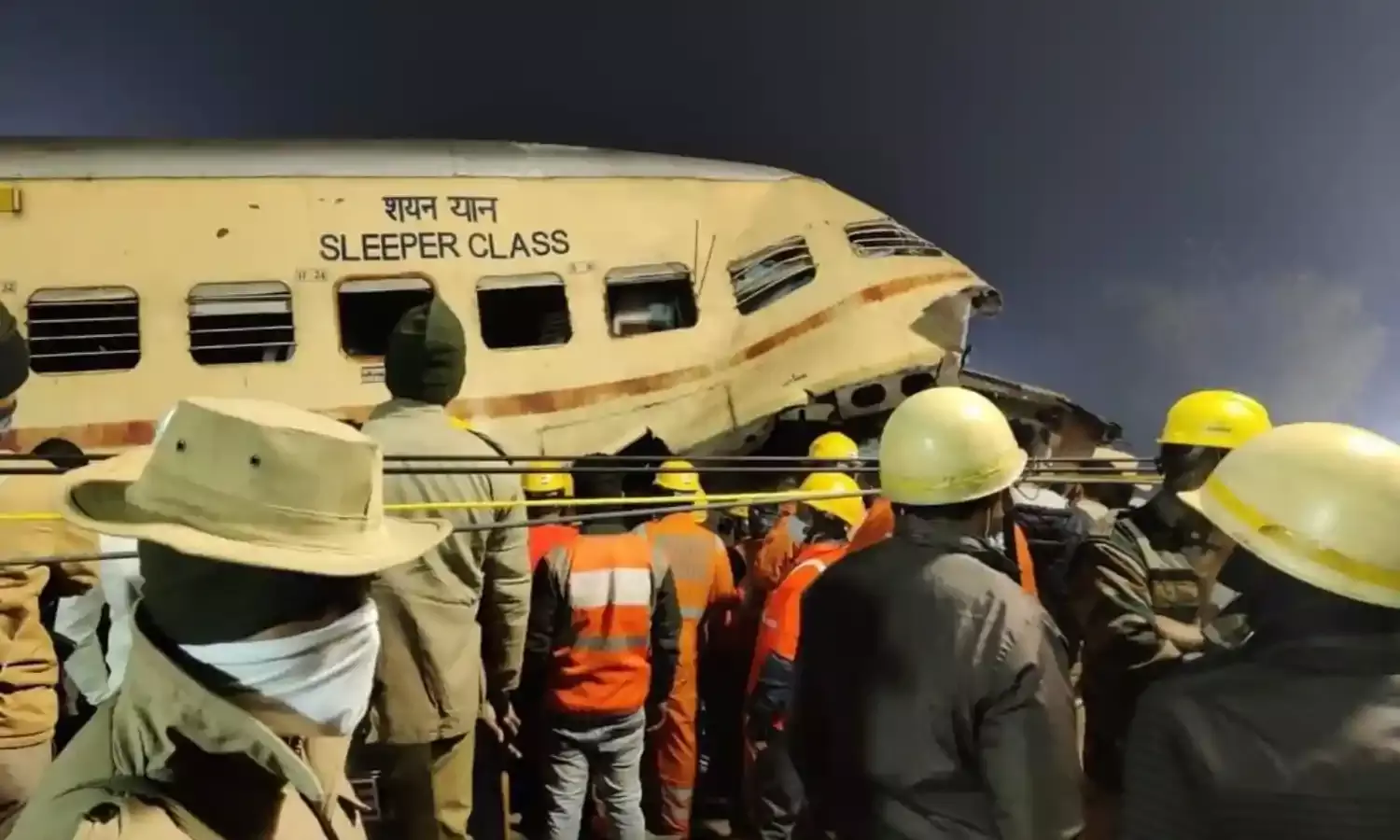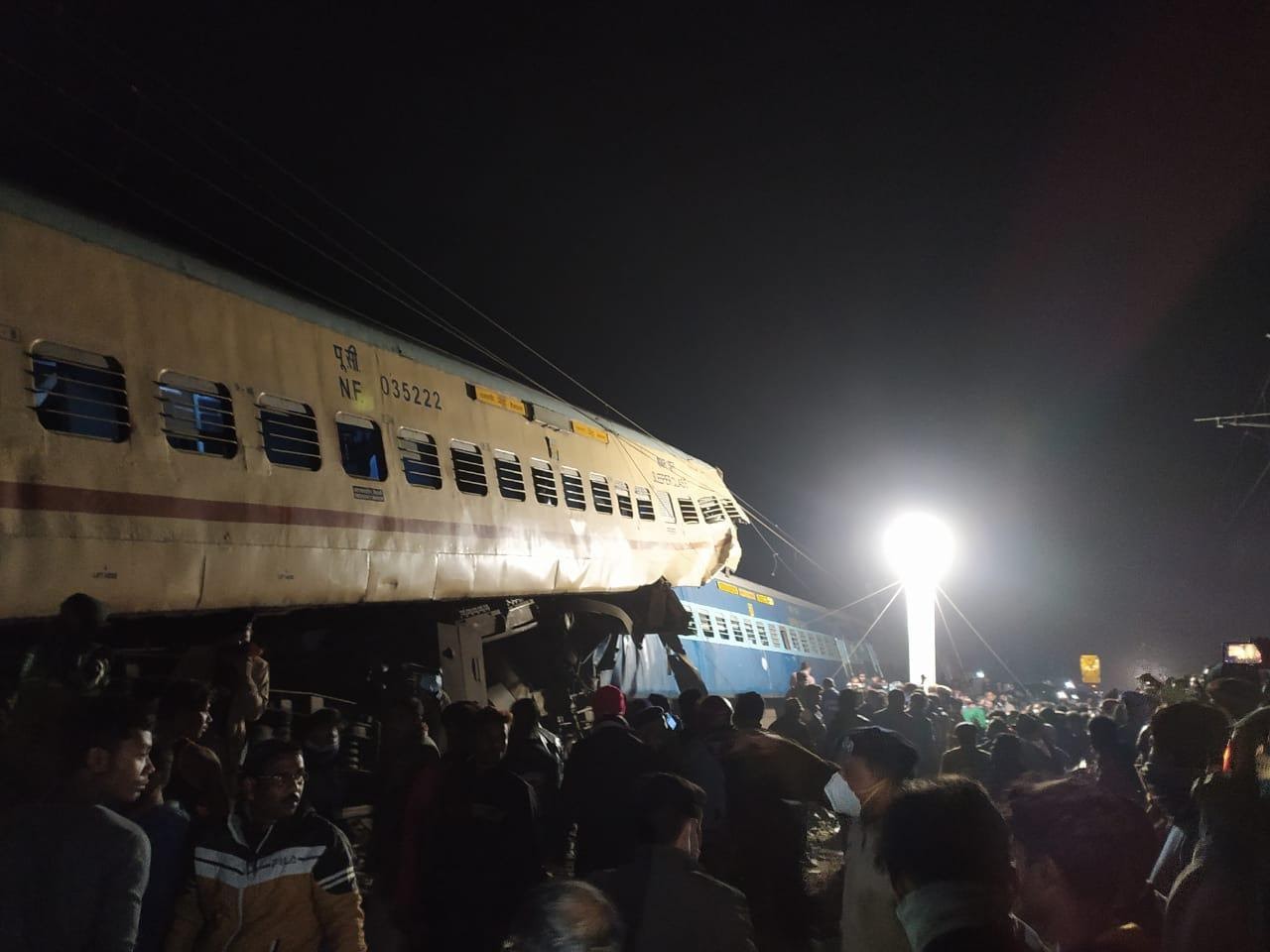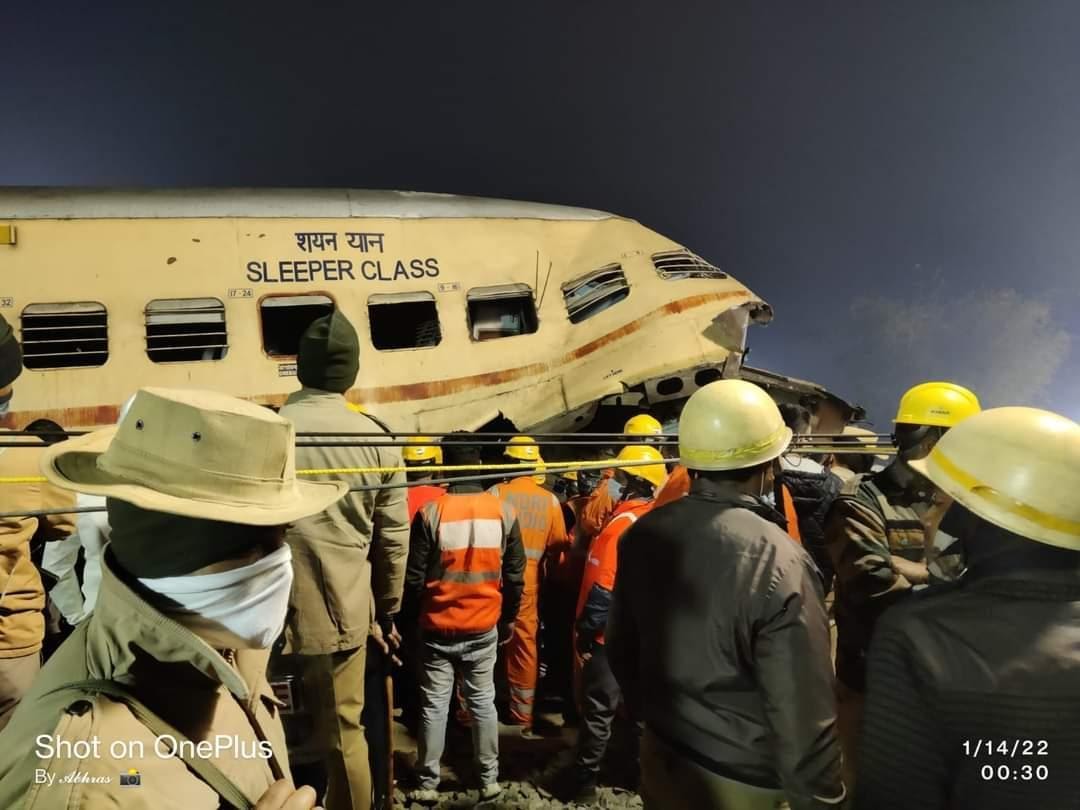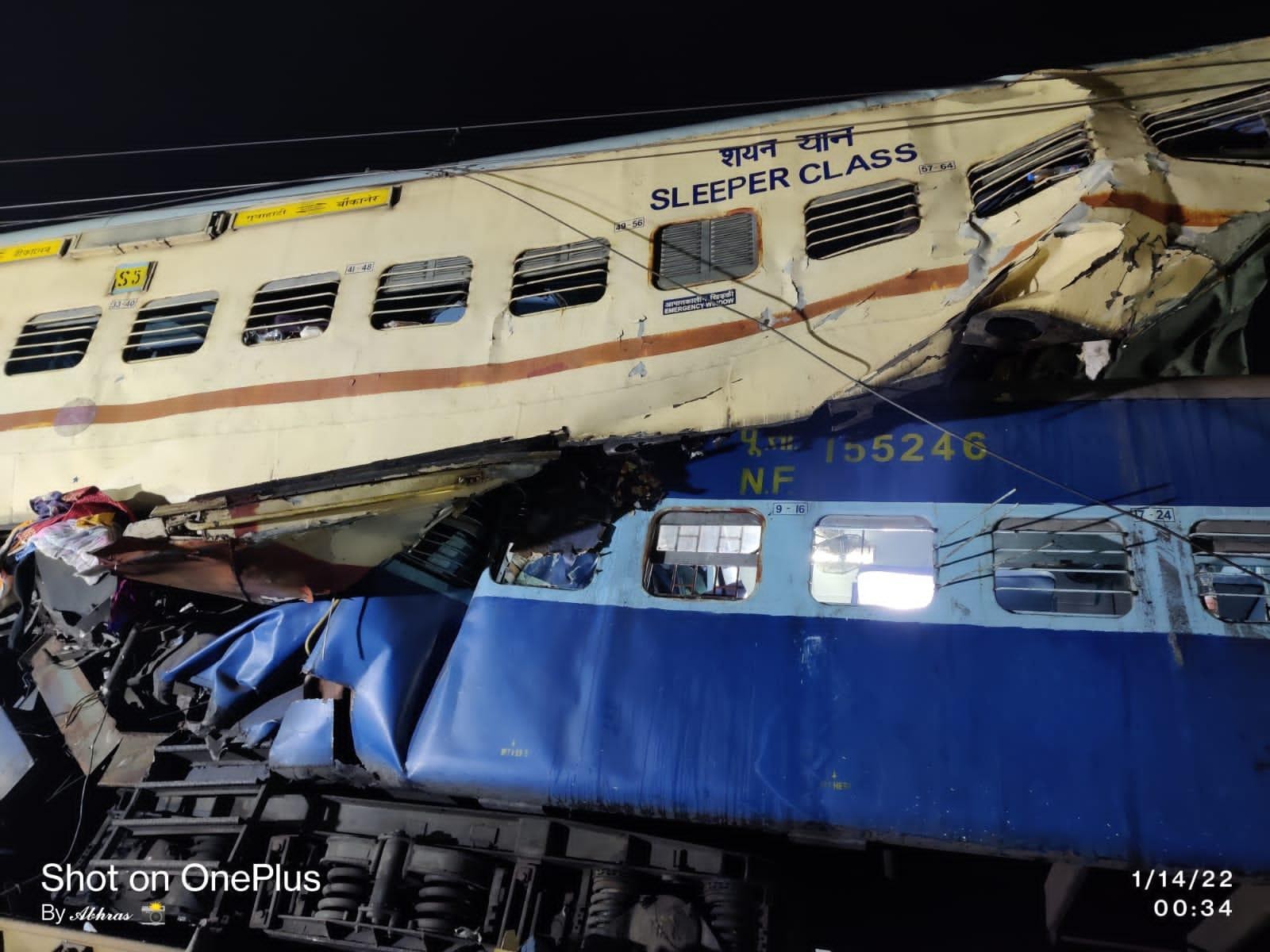Behind the Guwahati Express Tragedy: Rail Accidents Kill 32 People Every Day
'On-ground inspection needs to become more frequent and rigorous'

KOLKATA: “The sleeper compartments were absolutely destroyed. The rescue team had to use gas cutters to pull out passengers,” says Arindam Ghosh, a Students Federation of India worker who was at the accident scene to provide relief measures.
It was on January 13 near Domahani in the Maynaguri area of Jalpaiguri that several coaches of the 15633 Bikaner–Guwahati Express went off the rails around 5 pm. The accident killed 9 people and injured 45.
The injured passengers were rushed to the Jalpaiguri Superspeciality Hospital and North Bengal Medical College.
“Most of the passengers, after receiving first aid at Maynaguri B.Ed College, left in the special trains and buses the next morning,'' said Ghosh, who was at the scene till the early hours of January 14.
“Although it’s difficult to say anything for certain, casualties are likely to go up. The operation went on till 5am in the morning.”
Contradicting newspaper reports, he said only “5 compartments went off the rails: S5 to S9. AC 2-tiers and 3-tiers remained unaffected.”

Photograph: Arindam Ghosh
Union railways minister Ashwini Vaishnaw tweeted Thursday evening that he was “personally monitoring the situation for swift rescue operation.”
Vaishnaw announced compensation of Rs 5 lakhs for the kin of the deceased, 1 lakh for those with grievous injuries and Rs 25,000 for those deemed to have minor injuries.
The Commission of Railway Safety will conduct a “high-level” inquiry into the accident.
Abu Hasem Khan Choudhury, former Union minister and member of the Parliamentary Standing Committee on Railways, regretted the incident, describing it as “very unfortunate”.
“Railway tracks are highly ignored these days. On-ground inspection needs to become more frequent and rigorous,” Choudhury told The Citizen.
“The number of trains, especially heavy load trains have gone up, whereas there is a significant lack of maintenance of railway tracks,” he said.
Choudhury, who is the MP for Malda South, added that in-person inspections must be implemented properly, along with a “much needed upgradation” of railway tracks so they are able to safely carry such heavy and fast-moving trains.
According to the National Crime Records Bureau more than 13,000 train accidents occurred across India in 2020, killing 32 people daily on average. Maharashtra reported the most accidents followed by Uttar Pradesh. Many of these deaths are reported to be of migrant labourers.
The NCRB also records a significant reduction in the number of accidents over 2019, when 27,987 railway accidents occurred. Its 2020 report states that 70% of accidents occurred because of collisions caused by people crossing the tracks or passengers falling off the train.
It says more than 95% of these accidents (12,440 out of 13,018) were caused by defects in the locomotive, pilot error, negligent maintenance or poorly maintained railway tracks.
The Union railways minister has pointed towards a possible locomotive breakdown in the derailment of the Guwahati bound train.
Felix Schmidt, professor emeritus at the University of Birmingham where he was program director of the MSc in Railway Systems Engineering, told The Citizen that with the cause of the derailment still undeclared it is difficult to give any specific views. However, he shared a list of actions that might be of use:
– “Regular measurement of track geometry and state of track components using modern technology, including vision systems;
– Equipping rolling stock with vibration sensors and wheel slip protection systems;
– Reliability centred maintenance of rolling stock rather than simple time-based maintenance;
– Brake system maintenance;
– Enforcement of axle load limits;
– Enforcement of speed limits by training drivers better;
– Education and training of inspection and maintenance staff;
– Enhanced safety systems at level crossings.”


Photographs: Abhradeep Sarkar


